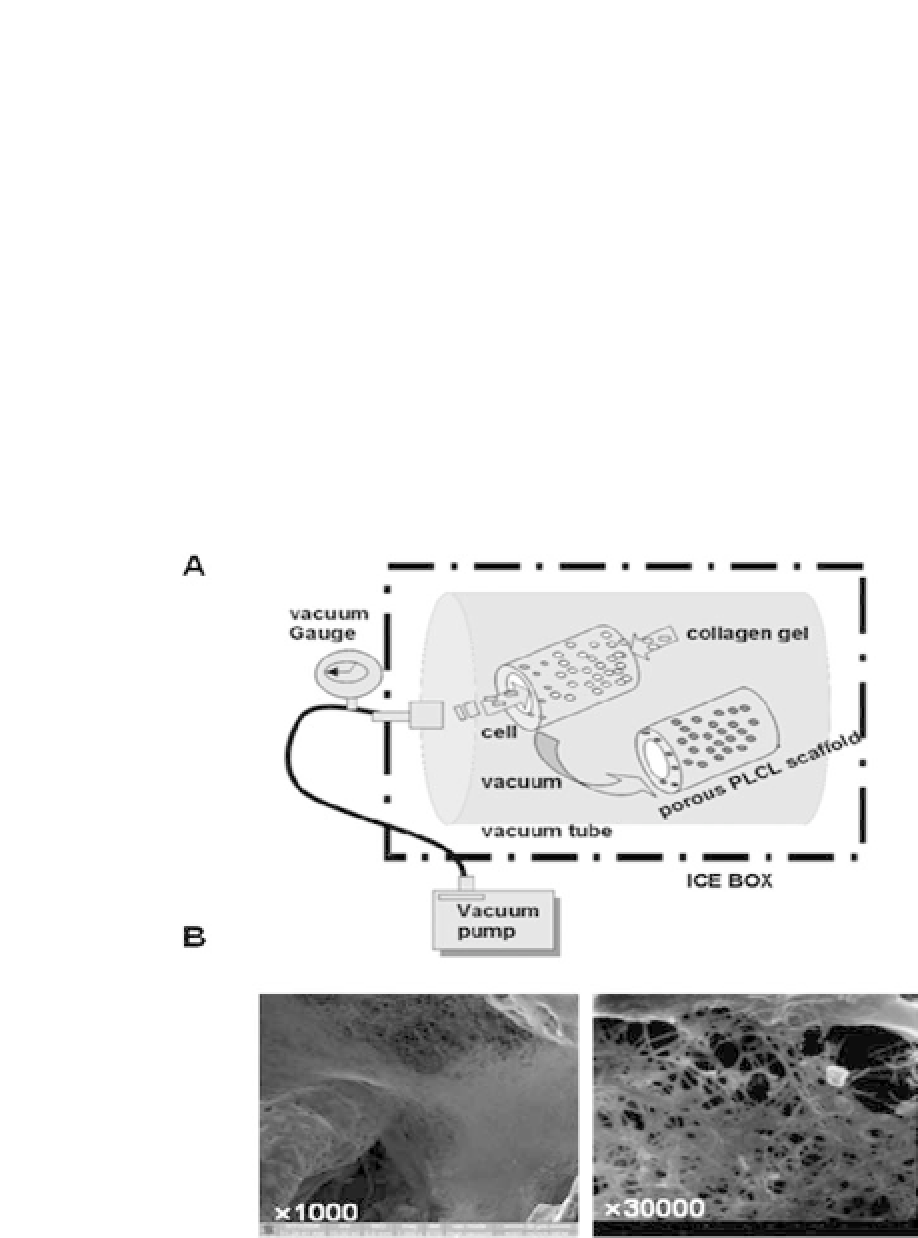Biomedical Engineering Reference
In-Depth Information
It was previously stated that tubular PLCL scaffolds were fabri-
catedasamechanicallyactiveartificialbloodvesselbyanextrusion-
particulate leaching technique. However, these extruded PLCL
scaffolds caused problems to be improved in respect of cell-seeding
e
ciency and cell ingrowth in the interior of the scaffold. We have
developed a collagen/SMC-incorporated PLCL scaffold to facilitate
small-diameter vascular tissue formation, using collagen gel as a
substratetoprovidethemicroporousPLCLscaffold,whichischarge
of mechanical support, with high surface-to-volume ratio.
32
Colla-
gen gel can contain pores large enough to accommodate living cells
and create pores into which living cells may penetrate and prolifer-
ate. A method for the preparation of a collagen/cells-incorporating
scaffold is presented in Fig. 27.6a. A collagen solution that can be
Figure 27.6.
Vacuum seeding method. Experimental setup of a vacuum
seedingsystem(a)andSEMimagesofcollagengelfibersinfiltratedintothe
inside of scaffolds (b).








Search WWH ::

Custom Search